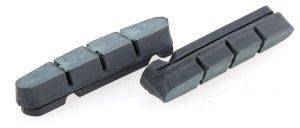Top Ten Things You Should Stuff in Your Bicycle Seat Bag
 You can find a bunch of lists online for what you should take with you under your saddle. Here is a list of what you will be most thankful you brought along.
You can find a bunch of lists online for what you should take with you under your saddle. Here is a list of what you will be most thankful you brought along.
1. First aid - The following items take up next to no room. Three medicated bandaids in various sizes. Two or three individual hand wipes. You’ll be so glad you brought these one day.
2. Identification - Some don’t like to carry a wallet. At least bring the ID.
3. Cash - $5 can get you out of almost any jam. Debit card, too?

4. House key - Easy to forget when you’re traveling light
5. Multi-tool set - Find the right tools for your bike. Even if you can’t fix anything, maybe someone else can help if you have the tools.
6. Cell Phone - Probably no need to remind you to bring this absolute necessity. You may prefer to use a mounting system to attach to your handlebar. But it will fit nicely into most seat bags.
7. Mini pump - You may prefer to mount your pump on the frame. However, some decent hand
 pumps are now small enough to go into some seat bags. An alternative is a CO2 pump. In any case, having a way to pump up your tire or that of a stranded cyclist is worth a few ounces and a bit of room in your seat bag.
pumps are now small enough to go into some seat bags. An alternative is a CO2 pump. In any case, having a way to pump up your tire or that of a stranded cyclist is worth a few ounces and a bit of room in your seat bag.8. Patch Kit and tire changing tool - Don’t bother with the one if you don’t have the other. West of
 Kansas, due to tire eating thorns, you will need all the protection possible against flats. In the rest of the world, it is certainly nice to have a way to fix a flat when they occur. For the Western US, be sure to outfit your tires with RhinoDillos tire liners. Then take a patch kit for good measure.
Kansas, due to tire eating thorns, you will need all the protection possible against flats. In the rest of the world, it is certainly nice to have a way to fix a flat when they occur. For the Western US, be sure to outfit your tires with RhinoDillos tire liners. Then take a patch kit for good measure.9. A spare tube - This will act as stuffing in your seat bag to keep other items from rattling around. It is also great for those times when the patch kit doesn’t work or you go through multiple flats.
 10. Sun screen - Did you remember to put
10. Sun screen - Did you remember to putsun screen on when you left the house early in
the day. Nutz! Now you have to hunt down and pay dearly for a large bottle of some brand you don’t even like. Instead, get the individual packets and put two or three in your seat bag. Or buy a small plastic bottle, and pour some of your favorite sun screen into the bottle as back up. You’ll thank me.
What would you add to this kit?























